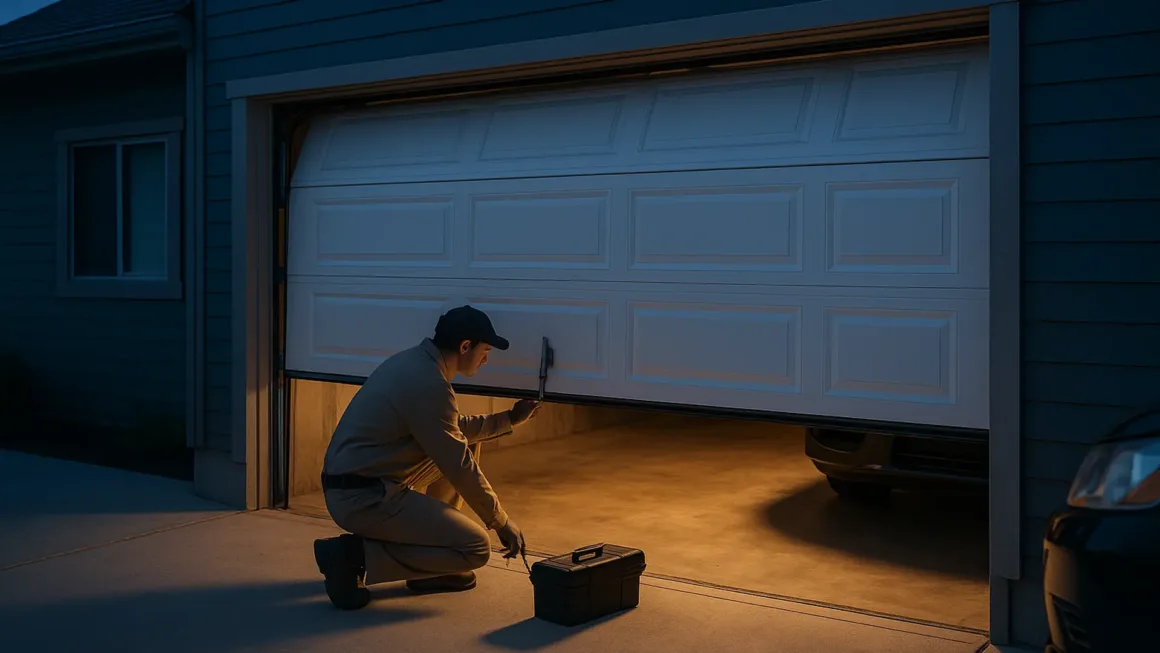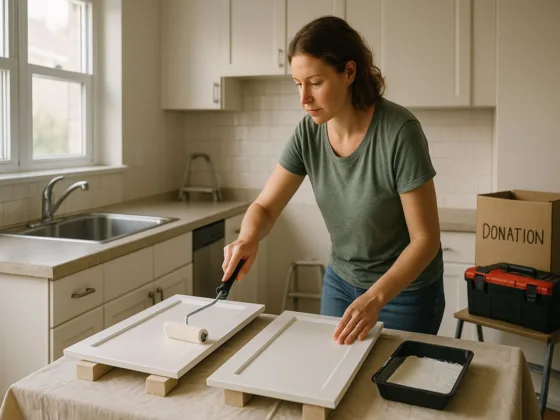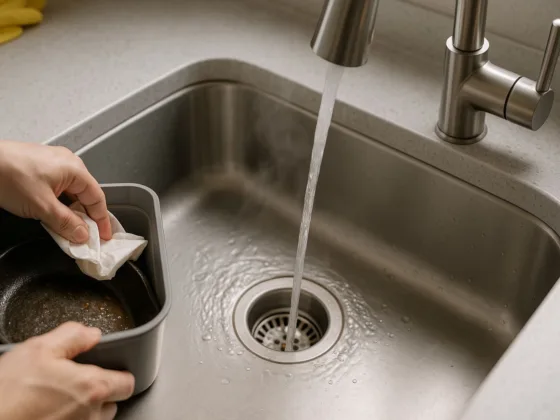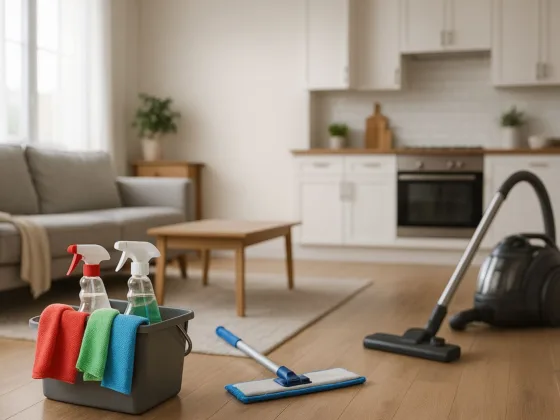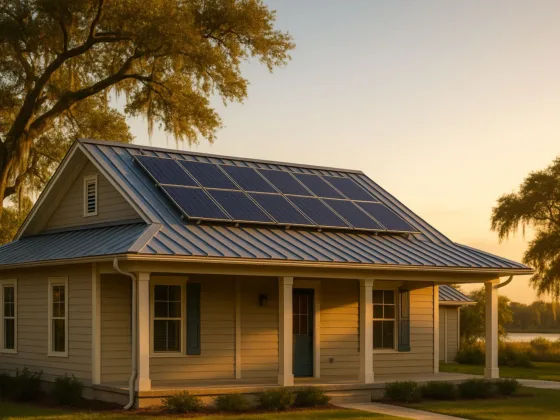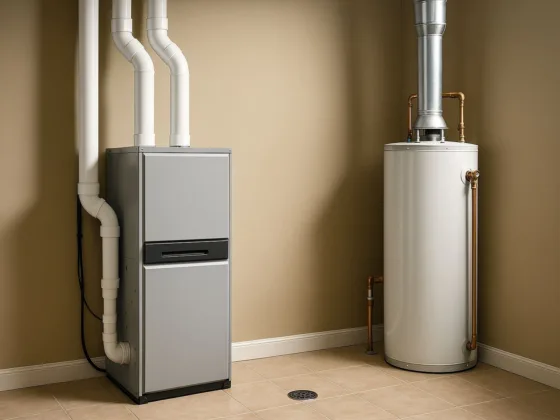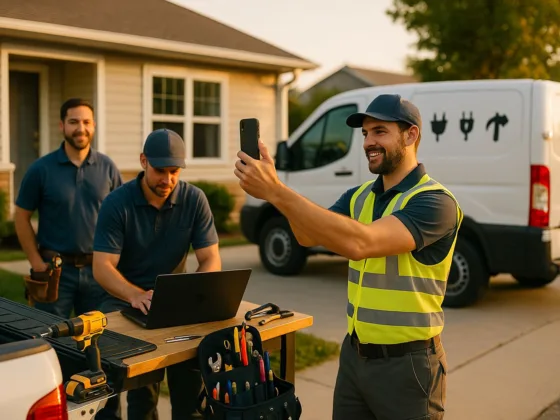Table of Contents Show
Quick answer: A true garage door emergency is any problem that makes the door unsafe, stuck open, or impossible to operate without risking injury or damage. Your first move is always the same: stop using the door, keep kids and pets clear, unplug the opener, and call a local emergency garage door repair company—then use the checklist below to figure out what you’re dealing with.
Modern garage doors can weigh well over 130–350 pounds. When something goes wrong, that’s a lot of moving weight hanging above your head. The more you understand about common emergency garage door issues, the easier it is to stay calm, keep everyone safe, and decide when it’s time to call in a professional.
This guide walks through the most likely emergency garage door issues you may encounter, what to do in the first five minutes, how professionals typically fix them, and simple habits that dramatically reduce the odds of a middle-of-the-night breakdown.
What Counts as a Garage Door “Emergency”?
Not every squeak or rattle justifies a 2 a.m. call to an emergency garage door service. But some issues absolutely do. Homeowners often ask which problems truly qualify as emergency garage door issues and which can safely wait for normal business hours.
Situations that do count as a garage door emergency
Treat these as urgent, stop-using-the-door-now problems:
- Door is stuck open and won’t close – Security risk and weather exposure for everything in the garage.
- Door is stuck half-open or hanging crooked – High risk of the door falling unexpectedly.
- Broken or dangling springs or cables – The door may free-fall or become impossible to lift safely.
- Door slams shut or feels extremely heavy – The counterbalance system (springs/cables) has likely failed.
- Door has come off its tracks – You see rollers out of the track or visibly bent tracks.
- Opener hums, smokes, or smells like burning – Potential electrical or fire hazard.
- Someone or something was hit by the door – Stop, unplug, and treat it as a serious safety incident.
Issues that are urgent, but usually not “drop everything” emergencies
These often can wait for normal-hours service as long as the door can be safely closed and left alone:
- The door is noisy, but still moves smoothly.
- The door opens and closes but seems slower than normal.
- The remote is glitchy, but the wall button works reliably.
- Minor gaps in weatherstripping or small cosmetic dents.
When you’re unsure, default to safety: stop using the door and treat it as an emergency until a qualified technician says otherwise.
First 5 Minutes: What to Do with Any Emergency Garage Door Issue
No matter which of the emergency garage door issues below you suspect, your first steps are almost always the same. To handle emergency garage door issues safely, start with these basics:
- Stop using the door immediately. Don’t hit the remote “one more time.” Forcing a stuck or jerky door is how tracks bend, cables snap, and openers burn out.
- Keep people and pets away from the door. Treat the area under and around the door like a construction zone until a pro confirms it’s safe.
- Unplug the opener. Pull the plug or switch off the breaker to prevent accidental activation.
- Do a quick visual scan (without touching parts). From a safe distance, look for:
- Gaps or breaks in springs
- Loose or dangling cables
- Bent or twisted tracks
- Bowed, twisted, or crumpled door sections
- If the door is stuck open, secure the opening as best you can. Move valuables inside, park a car close to the opening, and, if needed, use temporary boards or plywood (without touching the hardware).
Once everyone is safe and the opener is powered down, you can begin to narrow down which specific emergency garage door issue you’re facing.
7 Emergency Garage Door Issues You May Encounter
1. Broken Garage Door Spring
How to spot it:
- You hear a loud bang from the garage, like a firecracker.
- The door won’t open at all, or only lifts a few inches and stops.
- You see a visible gap in the torsion spring above the door, or a snapped extension spring along the tracks.
Why it’s an emergency: Springs counterbalance the full weight of the door. When one fails, the door becomes dangerously heavy and may slam shut or refuse to move. Springs are under extreme tension and are a leading cause of DIY injuries when people try to replace them themselves. Industry safety bulletins from groups like the Door & Access Systems Manufacturers Association (DASMA) and major manufacturers echo this warning and recommend leaving spring work to trained technicians.
What you should do:
- Do not attempt to open the door, even manually.
- Keep everyone away from the area beneath the door.
- Call a qualified emergency garage door technician and tell them you suspect a broken spring.
Real-life example: A homeowner heard a sudden bang overnight but didn’t see anything wrong at first glance. The next morning, the garage door wouldn’t open, so they tried the opener several times until the motor started to smoke. When a technician arrived, they found a snapped torsion spring and a burned-out opener. Unplugging the opener and calling for service right after the noise would have limited the damage to a simple spring replacement.
2. Door Off Its Tracks or Hanging Crooked
How to spot it:
- The door looks tilted, crooked, or twisted in the opening.
- One or more rollers are out of the track.
- The door binds, jerks, or stops suddenly while moving.
Why it’s an emergency: A door that’s off its tracks can collapse or fall unexpectedly if forced. Trying to “help” the opener will often make the damage worse.
What you should do:
- Start with the safety steps in the “First 5 Minutes” checklist above.
- Do not try to push or pull the door back into the tracks.
- Do not walk or drive under the door, especially if it’s stuck halfway open.
- Call an emergency garage door technician and describe exactly how the door is positioned.
Real-life example: One homeowner noticed their door jerking and scraping the track but kept using the opener for a few weeks. Eventually, a roller popped out, leaving the door stuck half-open on a snowy night and requiring an emergency call. If they had stopped using the door at the first sign of trouble and scheduled a tune-up, they likely would have avoided the off-track emergency altogether.
3. Frayed or Broken Cables
How to spot it:
- You notice frayed, rusted, or dangling cables along the sides of the door.
- The door looks uneven or binds at certain points in its travel.
- The door feels extremely heavy when you try to lift it manually.
Why it’s an emergency: Cables carry a lot of the door’s weight. When one fails, the door can twist, jam, or drop on one side. Professional safety checklists and DASMA technical data sheets specifically warn homeowners not to adjust or replace cables themselves because of the tension involved and the risk of injury.
What you should do:
- Don’t touch or pull on the cables.
- Don’t attempt to operate the door with the opener or manually.
- Call for emergency service and mention that cables appear frayed or broken.
Real-life example: A family noticed one side cable starting to rust and fray but decided to “watch it for a while.” A few weeks later the cable snapped as the door closed, leaving the door jammed at an angle with one bottom corner on the floor and the other hanging in mid-air. No one was hurt, but the repair cost went up because the twisted door also bent a track.
4. Door Stuck Open or Won’t Stay Closed
How to spot it:
- The door goes down, then reverses back up every time.
- The door closes, then slowly slides back open a few inches.
- The door is stuck open and won’t move at all.
Common causes:
- Misaligned or dirty photo-eye sensors.
- Obstructions in the path of the door or in the tracks.
- Weak or incorrect spring tension that makes the door hard to close safely.
- Improper opener force or travel settings.
Why it’s an emergency: A door that won’t close is both a security issue and, in bad weather, a fast way to damage tools, vehicles, and storage.
What you should do:
- Remove any obvious objects blocking the door.
- Gently clean the photo eyes and make sure both indicator lights are on.
- Don’t bypass the safety system by holding the wall button down for a full close.
- If the door still won’t close or stay closed after those basic checks, stop trying to run it and schedule an emergency garage door repair visit.
Real-life example: A homeowner found their garage door kept reversing when it reached the floor, so they held down the wall button to force it shut. The door came down on a trash bin and then jumped back up, nearly hitting the car. A technician later discovered one misaligned sensor and an opener force setting that was too high. After cleaning and realigning the photo eyes and resetting the force, the door closed smoothly without having to bypass any safety features.
5. Garage Door Won’t Open During a Power Outage
How to spot it:
- The opener doesn’t respond, and the power is out in your home or neighborhood.
- Your vehicle is trapped inside and you need to leave.
Why it can be an emergency: If you need to leave for work, medical care, or an evacuation, a stuck garage door quickly becomes a serious access problem.
How to use the emergency release (only if the door is fully closed and looks normal):
- Make sure the opener is turned off at the outlet or breaker.
- Pull the red emergency release handle straight down to disengage the opener from the door.
- Lift the door using both hands on the handles. If it feels extremely heavy or jerky, stop immediately.
- When power returns, follow your opener’s manual to re-engage the release mechanism.
If the door resists movement or feels dangerously heavy, don’t force it. That usually means there is a deeper mechanical problem, not just a power issue.
Real-life example: During a thunderstorm, a parent needed to drive a child to an early appointment but the power was out and the opener was dead. They pulled the red release handle and tried to lift the door but it felt unusually heavy, so they stopped and called a technician. The tech found a broken spring that had failed around the same time as the power outage. Because they stopped when the door felt heavy, they avoided a dangerous free-fall.
6. Opener Motor Hums, Smokes, or Smells Like Burning
How to spot it:
- The opener hums but the door doesn’t move.
- You smell something burning or see light smoke from the motor housing.
- The circuit breaker trips when you try to use the opener.
Why it’s an emergency: There’s a real risk of electrical damage or fire if you keep cycling a failing opener. You can also strip internal gears or destroy the logic board.
What you should do:
- Cut power to the opener immediately at the outlet or breaker, as in the initial safety checklist.
- Don’t keep resetting a breaker that trips repeatedly.
- Call a garage door professional and, if needed, an electrician to inspect the circuit.
In some cases, you may need to replace the opener to meet current safety standards for auto-reverse and entrapment protection. In the U.S., standards such as UL 325 set the baseline that federal rules use for automatic residential garage door operators.
Real-life example: After a late-night arrival, a homeowner found their opener only hummed and the door didn’t move, so they kept pressing the remote and wall button. After a few minutes, they noticed a burnt smell and a wisp of smoke from the opener housing. A technician later confirmed the internal gears and board were fried. If they had cut power to the opener at the first sign of trouble, they might have avoided a full opener replacement.
7. Door Slams, Drops, or Suffers Impact Damage
Sometimes you get a “combo emergency” because something has hit, bent, or dropped the door and now it behaves unpredictably.
How to spot it:
- The door slams shut instead of gliding down.
- The door won’t stay halfway open when lifted (fails a basic balance test).
- Panels are visibly dented, bowed, or twisted from an impact (vehicle, lawn equipment, etc.).
- Tracks are pulled away from the wall or visibly bent.
Why it’s an emergency: A badly bent door that can’t hold its own weight sits just one step away from a sudden collapse. That situation creates a serious safety risk for anyone walking or parking near it.
What you should do:
- Don’t try to straighten tracks or bend panels back into shape.
- Don’t park under or next to a door that may drop.
- Document the damage for your insurance with photos taken from a safe distance.
- Contact a professional garage door repair service immediately and mention that the door slammed or was hit.
Real-life example: A driver slowly backed into a closed garage door, leaving only a slight dent in one panel. The door still opened and closed, so they ignored it. Within a week, the bent panel began to twist as it traveled through the tracks, causing the door to bind and then slam shut unexpectedly. A repair that started as a single panel replacement turned into a full door replacement because the damage was allowed to worsen.
How Emergency Garage Door Repair Pros Typically Respond
The exact process varies by company, but reputable emergency garage door services tend to follow a similar pattern focused on safety first:
- Phone triage. They ask whether the door is open, closed, or stuck halfway; whether any springs or cables are visibly broken; and whether the door hit anything or anyone.
- On-site safety check. A technician inspects springs, cables, rollers, hinges, tracks, panels, the opener, and the door’s safety devices (photo eyes and auto-reverse).
- Stabilize first, then repair. The first goal is to make the door safe and secure (often by fully closing and locking it), then:
- Replace broken springs, cables, rollers, or hinges
- Re-seat an off-track door and adjust or replace damaged tracks
- Repair or replace a failing opener
- Brace or replace crushed or badly bent panels
- Final safety testing. Before they leave, they test the photo eyes, auto-reverse, and door balance; verify proper spring tension and opener force settings; and confirm the manual release works.
Don’t hesitate to ask your technician to show you how to use the emergency release cord and how to test your safety features monthly. A two-minute demonstration can prevent a major headache later.
Preventing Future Garage Door Emergencies
You can’t stop every breakdown, but you can dramatically reduce the chances of true emergency garage door issues by combining a few quick DIY checks with regular maintenance from a qualified professional.
Monthly DIY safety checks (5–10 minutes)
- Look & listen test. Run the door through a full open–close cycle while you:
- Look for wobbling, jerky movement, or sagging sections
- Listen for grinding, scraping, or new popping noises
- Test auto-reverse. Place a scrap 2×4 where the door closes and lower the door. It should reverse when it contacts the board. Consumer-safety agencies like the U.S. Consumer Product Safety Commission (CPSC) and industry groups such as the International Door Association (IDA) recommend this 2×4 test and advise having any non-reversing opener adjusted, repaired, or replaced right away. These checks also reflect entrapment-protection requirements in UL 325, the safety standard that U.S. rules reference for automatic residential garage door operators.
- Check the photo eyes. Make sure sensors are aligned, clean, and showing solid indicator lights.
- Stay away from high-tension parts. Never attempt to adjust springs, cables, or bottom brackets yourself—that’s work for trained technicians only.
Yearly or bi-annual professional tune-ups
At least once a year (or twice if you use the garage as your main entry), schedule a professional garage door tune-up with a qualified local company. A good garage door technician can:
- Check and adjust spring tension and door balance.
- Inspect and replace worn cables, rollers, and hinges.
- Lubricate moving parts with the right products.
- Verify that your opener’s safety features meet current standards for auto-reverse and entrapment protection.
That small investment typically costs far less than repeated emergency calls after something breaks at the worst possible time.
When to Repair vs Replace Your Garage Door
Sometimes repeated emergency garage door repair calls are a sign that the door is simply at the end of its useful life.
- Age. If your door is 20–25+ years old and failing often, replacement may be more cost-effective.
- Safety features. Older doors and openers may lack modern photo eyes, auto-reverse, and updated entrapment protection.
- Structural damage. Rusted, rotted, or badly crushed panels can compromise the whole system.
- Repair costs. If multiple repair quotes add up to half the cost of a new, safer door, replacement becomes easier to justify.
For planning and budgeting your next steps, you can pair this guide with related Dream Lands Design resources like:
- Average cost of a new garage door
- Different types of garage doors
- Best garage door materials for your home
To deepen your understanding and help search engines recognize this article as part of a strong garage door cluster, consider linking to these articles where relevant:
- Types of garage door repair you should know
- How to repair a garage door motor
- Installation of cross braces on a garage door
- How to secure your garage
- Best garage door repair services
FAQs: Emergency Garage Door Issues & Repairs
Emergency garage door issues are any situation where the door is unsafe, stuck open, or likely to cause injury, damage, or security issues. That includes broken springs or cables, off-track doors, doors that slam shut or won’t stay closed, and openers that hum, smoke, or smell like burning.
In most cases, no. A door with a broken spring can weigh hundreds of pounds and may drop suddenly. Even if you can lift it, you risk twisting the tracks or causing further damage. Call a professional for emergency garage door repair instead.
Not recommended. Springs and cables are under extreme tension and are one of the biggest sources of garage-door-related injuries when handled by untrained people. Leave these components to qualified technicians who have the right tools and safety training.
If the door is fully closed and appears undamaged: Turn off power to the opener, pull the red emergency release handle straight down, and lift the door with both hands. If it feels extremely heavy or jams, stop and call a pro.
Do monthly look-and-listen checks and auto-reverse tests, keep tracks and the door area clear, never ignore new noises or jerky movement, and schedule regular professional tune-ups to catch issues early.
Editorial policy: Dream Lands Design cites authoritative standards and consumer safety guidance (for example, CPSC rules on automatic residential garage door openers, UL 325 entrapment-protection requirements, technical data sheets from DASMA, and resources from the International Door Association) and updates our home-safety guides as codes and best practices evolve. An experienced home improvement editor writes and maintains our garage-door content, checks it against current safety standards, and a second internal editor reviews the article before we publish or update it. Learn more on our Mission & Editorial Standards page.
Last updated: November 13, 2025
